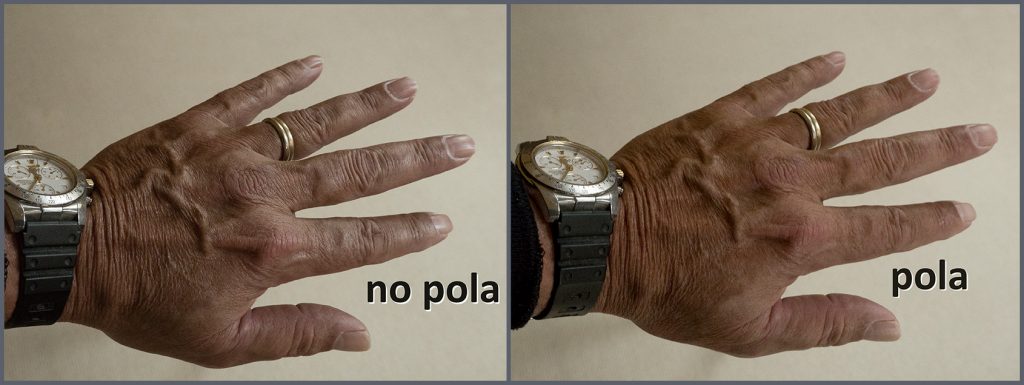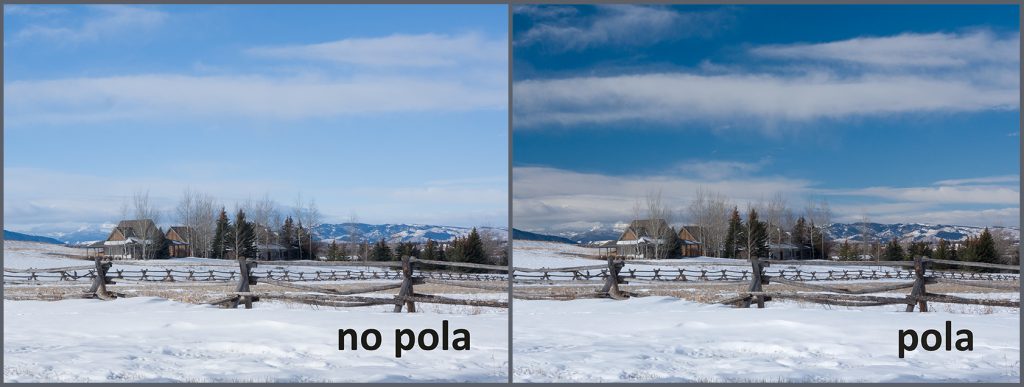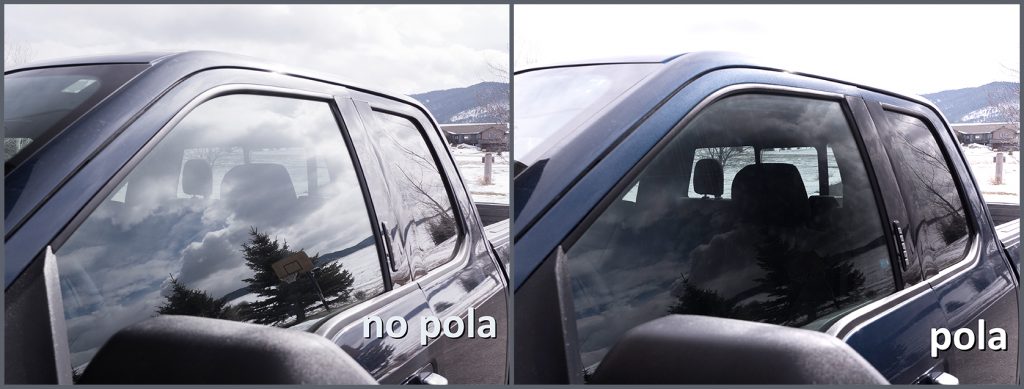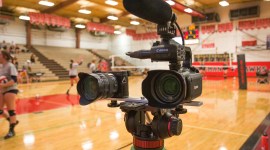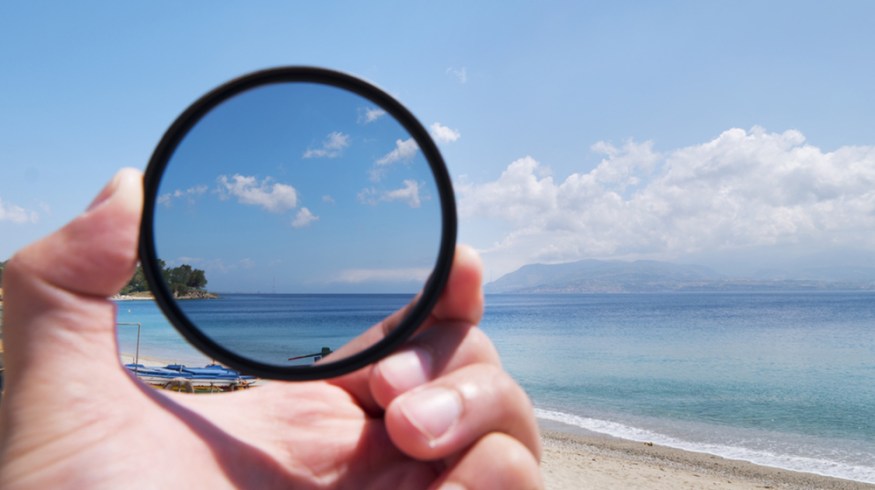
Polarizing Filters Are Essential — Unless They Aren’t
A polarizing filter can add clarity and drama to your image, but when should you avoid it?
Top image via Shutterstock.
Polarizing filters are venerable tools in every serious videographer’s toolkit. But how do they work, and when should you use one. First, the science.
How Do Polarizing Filters Work?
Visible light travels as transverse waves. On earth, light comes at us from every direction: reflected, refracted, and diffused. A polarizing filter is a screen that allows only the direct or parallel transverse waves through, while blocking all other light “noise.” This screen restricts the clutter of atmospheric junk that muddles an image. The photographic result of capturing direct light waves is includes clarity, enhanced saturation, and truer tonal response. A polarized image makes for a clearer picture without atmospheric interference, glare or reflective highlights. That makes it great for landscape photography — not so much for faces and hands.
Skin is alive! A polarizer cuts the sheen and deadens the natural moisture in healthy skin. Not a great look. It’s why I won’t use a polarizer when filming people that are any larger than half the vertical size of the frame. If a face is too shiny, apply make-up — it’s formulated to look natural while suppressing sheen.
So, while a polarizing filter isn’t great for portraits, it brings drama and tone to big, wide landscapes.
Polarizing Filters in Action
In the American West, photographers can frame shots with the horizon fifty miles away. A polarizer will cut through haze and glare, clarifying the image to an almost surreal impression. But here’s the deal: it’s not artificial — the image is genuine. A pola cuts the junk, like cleaning a dirty window. If you need clarity, preview with a polarizer.
People talking in cars has been a staple of TV and movies since the 1930s. In the old days, the car was in front of a process screen, but these days we shoot most of these sequences outside. In a frontal two shot where a windshield is between the lens and the actors, the reflections on the glass can be a distraction. You can reduce nearly all or some of these reflections with a polarizer. I tend not to dial out all of these reflections because they often add interest and reality to the shot. As I mentioned earlier, I don’t like how polarized skin looks, but it never seems to be that big of a deal in the case of car shots, especially if used at half strength. Some polarizers absorb two stops of light so make sure you compensate for that on the iris.
To see polarizing filters in action, check out this video.
What’s your take on polarizing filters? Essential or extraneous?


